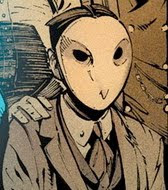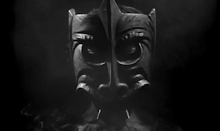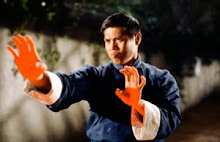
Returning again to a tribute to Agitation Of The Mind's Peckinpah Month. I'd love to keep doing these, but I've got to start putting out my year end stuff there's going to be alot of Essays and I want to make sure I've got the time. Still We'll see if the spirit doesn't move me once more before the end of the month. I rarely miss a chance to write about Pat Garret and Billy The Kid.
Major Dundee is a maddening film to look at from in terms of Autuerism. On one hand no one but Peckinpah could have possibly made the film, but at the same time the differences from the rest of his oeuvre are maddeningly many.
Chief among these differences is the tone; all of Sam Peckinpah’s films starting at Ride The High Country are pitched at the tone of an elegy. Even his so called “lighter” films such as The Ballad Of Cable Hogue and Junior Bonner deal with men who have been left behind by time and who have become completely isolated from the outside world. Even the slapstick heavy Hogue ends with the hero literally being run down by the modern age. Major Dundee on the other hand is something of a celebration, with relatively clear lines between good and evil, and an end in which the hero literally rides off into the sunset.
The next incongruity is in the hero. All Peckinpah protagonists, are heroes out of their time. There are the Wild West heroes of Ride The High Country, The Wild Bunch, Cable Hogue, and Pat Garrett And Billy The Kid who run into the modern age like a brick wall. The modern day outlaws with no need for society in The Getaway, Bring Me The Head Of Alfredo Garcia and, lord help me, even Convoy. The man out of time is seen again in the Soldier fighting in a desperate war he is about to lose in Cross Of Iron, and the timid Mathematician who finds himself first out of place in the “brutish” Cornish village he has moved to, and then when the pendulum swings the other way, ostracized from all society when he gives into brutal Neanderthal violence when his home is threatened. Even his twin CIA thrillers The Killer Elite and the regrettable The Osterman Weekend hinge their plots on the fact that the protagonists still believe in outdated notions of honor, loyalty, and fair play. Only Major Dundee breaks this mold.
From the outset it looks like Dundee is a perfect fit for the Peckinpah mold. Regulated to a dusty frontier base for “Fighting his own war,” Dundee seems like someone who might only be comfortable as a Spartan waging total war in ancient Greece. Further backing this interpretation, is the fact that Dundee is a Calvary man, a form of warfare that itself will be an antique by the time the next war rolls around. This is further evidenced by the fact that most of Dundee’s ire is projected onto the cowardly Lt. Graham, who as an artillery officer represents the modern form of war that will make Dundee obsolete.
However, the film fails to follow through. Now, as even this restored version is 45 minutes shorter then Sam’s cut, this might not be entirely his fault. However, in the context of the film we are offered, this line of thought is abruptly dropped. Dundee is not out of his time at all, his methods win out, he and his men survive, and when he returns to The United States having declared war on France, we are not even allowed to see any consequences of his actions. He is not reprimanded or punished; he is a conquering hero.
It is tempting to say that Richard Harris’s character is the “Peckinpah character,” but on further observation this is simply not so. The Harris character may only be as Dundee chastises him, “An Irish Potato farmer,” rather then Southern Gentry but the fact is that Harris has made himself to fit into his time. As he charges into enemy ranks at the end of the film in one last glorious stand he is every inch the cliché of what the Southern gentleman is supposed to be.
Another small but crucial difference between this and other Peckinpah films is the fact that this is the only film in which Indians are viewed as the antagonists. Peckinpah always preferred to have the rot come from within. Here, aside from a few throwaway lines from James Coburn about the civil war, and Heston’s drunken “Jesus beard” inducing freak out, the enemy is always a foreign entity.
Another difference between this and other Peckinpah films is the violence. The violence level is surprisingly high (although as I am only familiar with this cut I am unable to judge how much of this is due to the leniency of modern times). There are burning bodies, bloody children stuck with arrows, and gunshots and knife wounds that actually bleed. However, there is one crucial thing that separates this from Peckinpah’s other films. On one hand the action set pieces are the first that look like Peckinpah’s trademark style (Ride The High Country Shootouts are for the most part shot in classical form), with their split second edits, attention to small detail, confused melees, and bloody consequences. On the other hand, almost all the damn action scenes are set at night, where it is almost impossible to see anything. The result is we have the techniques, but none of the sickening clarity that they provide. It’s maddening and one feels a bit like a Pavolovian dog who has heard the bell and now waits impatiently for the damn treat to come. Instead of the sickening lucidity there is mere frustrating confusion.
Still there are quite a few things to enjoy about Major Dundee, and plenty of Peckinpah’s signature touches remain. For one thing his wit and smartass attitude are firmly in place. There is that wonderful moment when the Union soldiers, Confederates, and Cowboys ride from the base one after another, each singing their representative songs as they clash with one another. The idea of showing the divisions within the camp with literal “discord” is an ingenious one. Another sly reference comes when Coburn informs Heston that he makes “a mighty suspicious Mexican.” An Orson Welles fan in the audience has to laugh at that line.
There is no Peckinpah film that is without its moments of eerie poetry. One moment in particular stands out as the Calvary in full formation rides through the ruins of the Mexican village. The sequence starts on its outskirts, moving past the hung bodies, and dogs feeding upon a human course, past the old women and starving children who seem to be all that’s left of the town, as children pick the beans out of the dirt. The sequence shot in long takes is surreal, and haunting presaging Apocalypse Now.
Also fully formed is Peckinpah’s love of Mexican Culture, with the fiesta scene that is a clear predecessor to the one in The Wild Bunch. The Bunch deepened its fiesta sequence by mirror it with one in the enemy camp which had a kind of Satanic grandeur. Still it’s hard to disparage the pleasures of the scene. It’s filled with an easy camaraderie, and good humor (Dundee is a surprisingly funny film in whole). The scene has an Altman like sense of enjoyment of itself. It takes its time and allows us to discover the characters, and all and all it really is quite lovely. Peckinpah’s respect for the Mexican culture is evident as well, the Mexican characters in a Peckinpah film are always characters, not stereotypes, and this one is no different.
As I said, Dundee is a maddening film, a comprised film that is truly Sam’s, an entertaining film that is highly flawed, simultaneously a mess and a masterpiece.




































































































3 comments:
Thanks once again. I've now posted a link to this article.
Not wanting to drag you away from end of year lists and whatever else you've got planned for Things That Don't Suck during December, but I'd love to hear your thoughts on 'Pat Garrett and Billy the Kid', which is my second favourite Peckinpah film (by a very short margin) after 'The Wild Bunch'.
Alright I'll be sure to! I'll probably end up doing it a bit later in the month though.
Post a Comment